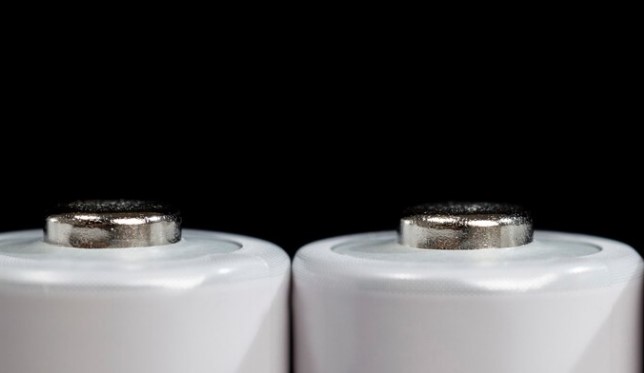Whether it’s in a common light bulb or a sophisticated IoT device, the humble resistor is a critical component in countless electronic devices. However, among the vast array of resistors that exist, one type stands out for its unique ability to safeguard circuits from overcurrent conditions while also contributing to precise resistance and power dissipation. This component is the fusible resistor – a workhorse in electronics that’s worth its weight in gold (metaphorically speaking, of course).
In this comprehensive guide, we will explore what makes fusible resistors distinct, how they are engineered, their myriad applications, and why their presence in modern electronics is a testament to the advanced circuit protection strategies we have at our disposal.
What is a Fusible Resistor and How Does it Work?
Fusible resistors, also known as fuse resistors, are a combination of a resistor element and a thermal fuse (or sometimes a mechanical fusible link) within a single package. The fuse resistor serves a dual purpose – as a precise resistor for current control and voltage division, and as a protective fuse that disconnects the circuit if an overcurrent condition is detected.
The Mechanism
The fusible part of the name comes from the resistor’s ability to literally “fuse” – where the resistor is designed to heat up rapidly when an overcurrent event occurs. This rapid heating is indicative of a fault and triggers the fuse to open. The design is such that this occurs before other more vital components in the circuit become damaged.
Composition and Construction
Fusible resistors are typically constructed with resistance wire wound on a ceramic core, allowing for high stability. Over this wire, a special coating is applied, which is engineered to fail quickly during an overcurrent event. The casing of the fuse resistor is also designed to withstand the thermal expansion during the fuse’s operation – ensuring the safety and integrity of the surrounding components even under fault conditions.
Characteristics and Response Time
One of the most important features of a fusible resistor is its time-current characteristic, which tells us how quickly the component will respond to an overcurrent and the current at which it will melt. This is crucial as it must be fast enough to protect the circuit while also not being so sensitive that it triggers too easily.
The Applications of Fusible Resistors
Fusible resistors are employed across a broad spectrum of industries and applications due to their unique attributes. Here are some key areas where they are used:
Surge Protection
The advent of smart technology and the proliferation of sensitive electronics has led to an increase in the need for surge protectors. Fusible resistors serve as valuable components in surge protectors. Surge events, such as lightning strikes, can cause massive overcurrents. The response speed and reliability of fusible resistors make them an indispensable part of the protection mechanism.
Motor Control and Power Supply
Motors and power supplies are vulnerable to short circuits and other issues that can lead to overcurrent scenarios. Fusible resistors can be used to protect these systems, ensuring reliability and longevity.
Telecom and Networking Equipment
In communication equipment, especially in environments where any downtime is costly, overcurrent protection is critical. Fusible resistors provide a failsafe against malfunctions that could lead to service interruption or even hardware damage.
Automotive Electronics
The rugged nature of fusible resistors makes them well-suited for the automotive industry. They are found in various electronic control units (ECUs) to protect against erratic loads or shorts that can occur in the harsh environment of a vehicle.
Selecting the Right Fusible Resistor
Selecting the correct fusible resistor for a given application is essential to ensure the protection of the circuit and the reliability of the equipment. Here are some key considerations:
Resistance and Tolerance
The fusible resistor’s standard role is one of resistance, so choosing the right resistance and tolerance is essential for its primary function within the circuit.
Maximum Power Dissipation
The maximum power that a fusible resistor can safely dissipate without excessive heating is an important factor, particularly in power electronics applications.
Time-Current Characteristic
Understanding the expected time- and current-related operating parameter for the application in question is crucial. This will help ensure that the fusible resistor responds to an overcurrent in the desired manner.
Environmental Considerations
Depending on where the electronic device will be used, environmental factors such as temperature, humidity, and vibration tolerance must all be taken into account when choosing a fusible resistor.
The Future of Fusible Resistors
As electronics become more advanced and integrated into every aspect of our lives, the importance of components like the fusible resistor will only increase. Innovations in materials and manufacturing processes are leading to fusible resistors that are smaller, more efficient, and better tailored to specific applications.
The future of fusible resistors also intersects with the broader advancements in circuit and system protection, including the use of smart components that can communicate their status in real-time. From smart homes to the industrial internet of things (IIoT), the intelligent deployment of fusible resistors, as part of a comprehensive protection scheme, will be pivotal to ensuring the reliability and safety of modern electronic systems.
In Summary
Fusible resistors embody the elegant marriage of functionality and necessity in electronic design. Their ability to both protect circuits from the deadliest sin of overcurrent and to provide precision in resistance makes them one of the most versatile components in an engineer’s toolbox. As we evolve to a world connected by the electronic thread, the role of fusible resistors only grows, underpinning the reliability and robustness of the technology we increasingly depend upon. It is the ingenuity and resilience in devices such as fusible resistors that continue to push the boundaries of innovation in electronics.



